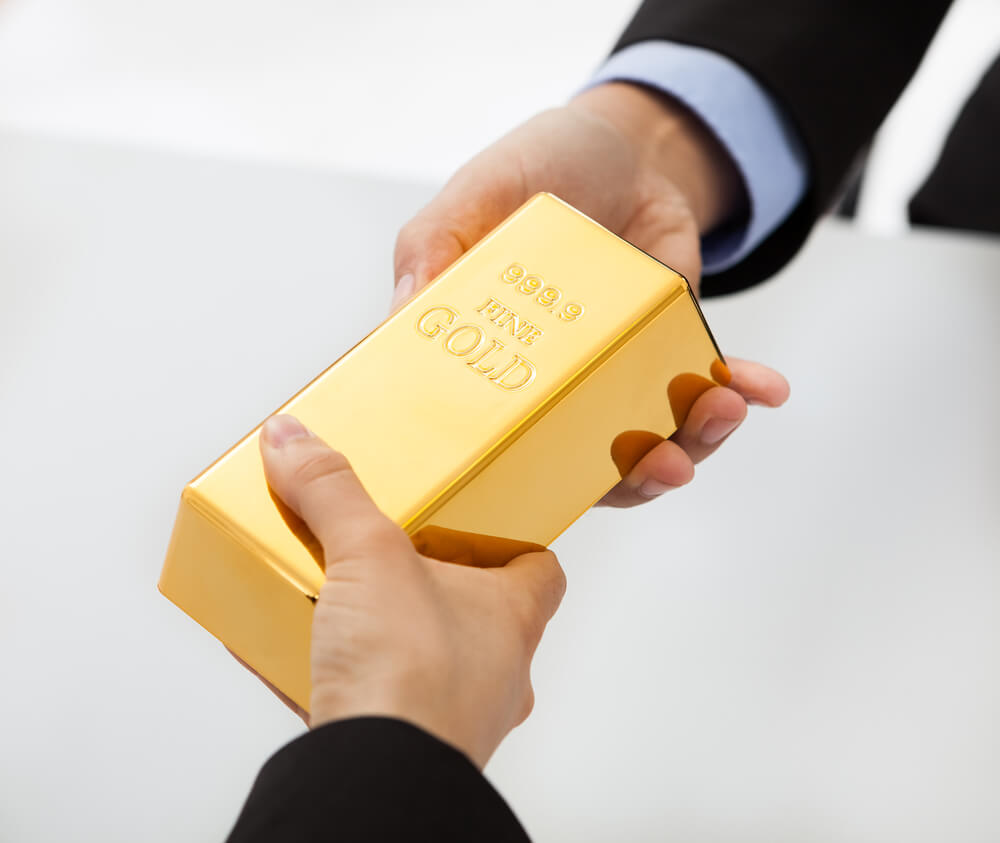
Do Not Make These 9 Mistakes When Buying Gold
There are many reasons why people buy gold. But the two most significant of them is to either safeguard finances or put on some. The latter cohort with little to no investment focus turns to gold jewelry. However, those with an investment perspective usually flock toward bullion coins and bars.
Although gold jewelry is not a “non-asset”, it isn’t how you “invest” in the precious metal. First-time gold buyers who know very little about investing in gold buy ornate gold, not realizing they’ve taken a monetary hit on the purchase. And that’s probably the biggest mistake people make when buying gold (which we’ll talk about later in this article).

Besides the above, there are several other mistakes gold investors (not buyers) commit, and we shall throw light on them all in this detailed write-up. Keep reading to learn more.
Table of Contents
Mistakes Gold Investors Make with Their Gold Purchases
There’s never a wrong time to buy gold. But there are certain things you could do wrong when buying gold. The following are some of the most common ones:
Buying Gold Jewelry
Buying gold jewelry is not a “mistake” per se. If you like to wear gold and don’t care about the investment aspect of the purchase, purchasing gold jewels isn’t bad at all. However, gold ornaments cannot be part of any sound investment strategy, so we are calling it out.
Gold jewelry is terrible from an investment perspective because it’s not pure gold. Although there are bullion coins, including some of the most expensive gold bullion coins, that aren’t 24-karat gold pieces, a piece of jewelry’s gold content is significantly lower. Gold jewelry is not 100 percent gold because gold easily bends. Other metals such as copper and silver lend it some rigidity, which helps keep intact the jewelry’s original shape and design.
Moreover, jewelry is an intricate piece with artistry involved. The ornament’s price includes the salary or fee paid to the designers, which doesn’t translate into money when you’re about to liquidate the jewel.
Read more: The Best Time to Buy or Sell Gold
Buying High, Selling Low
To buy gold when the prices are soaring and sell it when there’s not much investor demand is a rookie error many people make. Such mistakes are usually due to a lack of knowledge about historical gold prices, general gold price movements, etc. Some people aren’t even financially literate enough to realize gold prices go up during or as a precursor to a financial crisis.
These individuals are likely to buy gold during an economic crisis’s peak, incurring losses since the price of gold settles down once the economy is revived and the currency redeems itself.
To not be guilty of such blunders, it’s imperative to stay updated with the gold market and the industry. If you watch the news or continuously monitor the price of gold, you will have a greater chance of buying gold coins, gold bullion, or other precious metals for a low price. There are free gold price charts online to help you with the tracking.
Panic-Trading
When everyone’s stocking up on gold, it’s hard to resist the temptation not to do the same. There’s the fear of not having enough gold in your precious metals depository when pretty much every other person you know fills their coffers.
And when the opposite happens, or gold prices plummet, holding on to the metal while many investors around you are selling them in hordes can cause fears of owning inexpensive gold.
Neither of the above approaches is correct. Individual investors who try to replicate market trends may feel good about their actions in the short term but are likely to incur long-term losses.
How to not jump on the bandwagon? There’s no definite strategy to avoid selling and buying gold when there’s a market frenzy. But revisiting why you purchased gold in the first place could help stabilize your wavering thoughts. For instance, if you invested in gold to save for post-retirement or meet a specific goal, it becomes difficult not to feel perturbed by externalities.
Gold is an asset for the long haul and not short-term gains. Sell gold only when there’s a personal emergency and not when the prices rise. And buy gold when you genuinely feel there’s not enough gold in your portfolio. Ensure you get the timing right or do not buy gold coins or bars when the gold price is relatively high.
Not Diversifying the Investments
When most people contemplate a gold investment, they think of gold coins and bullion bars, not realizing the other ways to invest in the metal: gold funds, gold ETFs (exchange-traded funds), gold futures, etc. And if you’re not a fan of digital gold and do not fancy the security and storage issues associated with owning gold in the metal, you can always take the gold IRA route.
Even if you are keen only on gold coins, you cannot just buy any gold coin. Bullion coins, including silver coins, differ in size, purity, design, origin, etc. Each gold coin issued has had a purpose that could ascertain its price beyond its melt value (a coin’s value if melted and sold purely for the material). In short, buying an eclectic mix of gold coins is recommended if you’re purely into gold coins.

Not Studying the Gold Market in General
Whether you buy gold, invest in stocks, or make any high-ticket purchase or high-stake investment, learning more about your options is imperative. Not every gold coin’s price, for instance, is based on the spot price of gold alone.
There are likely to be a lot of coins with numismatic value or historical significance, adding a few thousand dollars more to the price tag. If you never bothered to learn about such coins and happened to own a few of them, you may sell them for a price lesser than their actual worth.
Similarly, suppose you pick up gold stocks without trying to know more about the particular company’s profits, their current and future projects, and the direction in which the industry is heading in general. In that case, you’d incur heavy losses on your stock purchases.
Gold mutual funds and ETFs are easier to pick compared to individual stocks, but you still must study how a particular fund has performed in the past, the asset management company behind it, fund fees, and other things.
Doing Business with the Wrong Sellers
If you’re buying gold coins, bullion bars, numismatic coins, etc., ensure the seller or your local dealer is trustworthy. You may purchase gold bullion, rare gold coins, and other physical gold at dealers, pawnshops, etc. Just make sure those sellers are familiar or trustworthy. Most importantly, the gold dealer should be on the database of the United States Mint.
When dealing with listed businesses with reputation and history, you can almost be sure of not being handed down fake or impure gold. In other words, if the dealer claims the gold products they sell are pure gold, you can take their word for it. But to not be on the sorry side, always double-check things.
Generally, it’s advised to buy gold only from dealers or retailers with reputation and accreditation. Avoid dealing with pawnshops, individuals you met online, etc., as much as possible. The last thing you’d want is to engage with a shady dealer who purveys overpriced or fake gold.
Paying a Steep Premium
Dealers procure gold for spot prices or even lower rates thanks to their business connections. They are selling someone else’s gold, leveraging their ability to access a wide range of potential buyers. How do they make money? Dealers place a markup over the price at which they procured the gold, which is how they make money.
Most gold dealers are pretty reasonable with the margin they set atop the spot price. However, some unscrupulous dealers charge a higher percentage than usual as their markup fee. Your goal when buying gold should be to steer clear of such dealers.
To ascertain if the markup set by the seller is justified or not, take note of the spot price of gold for the day. Ensure the dealer’s fee is not more than 8% above that price. A 5% markup is usually the minimum to be laid on various gold articles, including rare coin dealers. Some could set an even lower margin to score more transactions, but look out for too good to be true deals as you may get handed down fake or highly impure gold.
Chasing Historical Value
Most gold coins trade at a price equivalent to their melt price. Some, however, transcend that value and work at a higher price. Rare coins, certified gold coins, or coins with historicity attached are the ones to sell at a premium or above their original issued price.
Gold coins that usually sell at a slight premium or are popular among collectors include the Canadian Maple Leaf and American Gold Eagle. Kindly note some of these coins are likely to not be pure gold—for instance, the American Eagle is 91.67% gold, with the remainder being silver and copper.
But not all gold coins minted decades ago are historically significant or coins with numismatic value (value ascertained by a coin’s rarity, quality, and demand). Millions of gold coins were minted more than a century ago. Although many of them were likely melted down, the majority could still be in circulation or physical possession—which means it’s safe to assume they aren’t “rare”.
Acting on the Advice of Loved Ones
Although there’s no doubting that your family and friends want only good things to happen to you, they aren’t people you’re supposed to consult with before buying gold. Even if they’ve gold in their portfolio, it’s advised you do not let them call the shots since their investment goals will likely not align with yours.
For instance, your sibling or friend’s gold investments could be primarily gold stocks and ETFs. Your interest, however, could be in physical gold. And that’s just one of many disparities that could arise. If people you know have invested in gold coins or rare coins and you’re looking to buy them yourself, it’s still advised not to replicate their strategy because there are just too many variables to parse.
Read more: How to Sell Gold and Silver
Conclusion
Buying gold usually means procuring the physical metal. But it could also mean buying the yellow metal in its various digital forms.
Talking about physical gold, always buy gold coins or gold bullion for their gold content. External factors, such as historical significance, may determine their market price. But it’s recommended to discount those non-tangible aspects when buying gold coins. Do not readily pay a premium for hard-to-quantify characteristics.
If you’re going the digital gold route, make sure you do even more due diligence since the possibilities of losing money with paper gold investments are greater with every wrong step you take. You score big when you make the right moves with digital gold investments, usually more than the capital gains accrued from any physical bullion possession.
FAQs
How do you identify gold coins that aren’t worth collecting?
If a gold coin is not in your budget or seems overpriced, that is the kind that you must stay away from.
Look out for some dishonest coin dealers try to sell you gold coins based on fake numismatic credentials. Only a handful of bullion coins or bars enjoy elite status or are well worth the high premium they trade for. The coins are either extremely rare or only one of a kind. We’ve covered them here.
Even proof coins are usually only a few hundred dollars more than their melt value, and that greater value could be exaggerated and may disappear based on future market conditions. To learn more about the numismatic value of your purchase, check out the American Numismatic Association and Numismatic Literary Guild Inc. websites.


